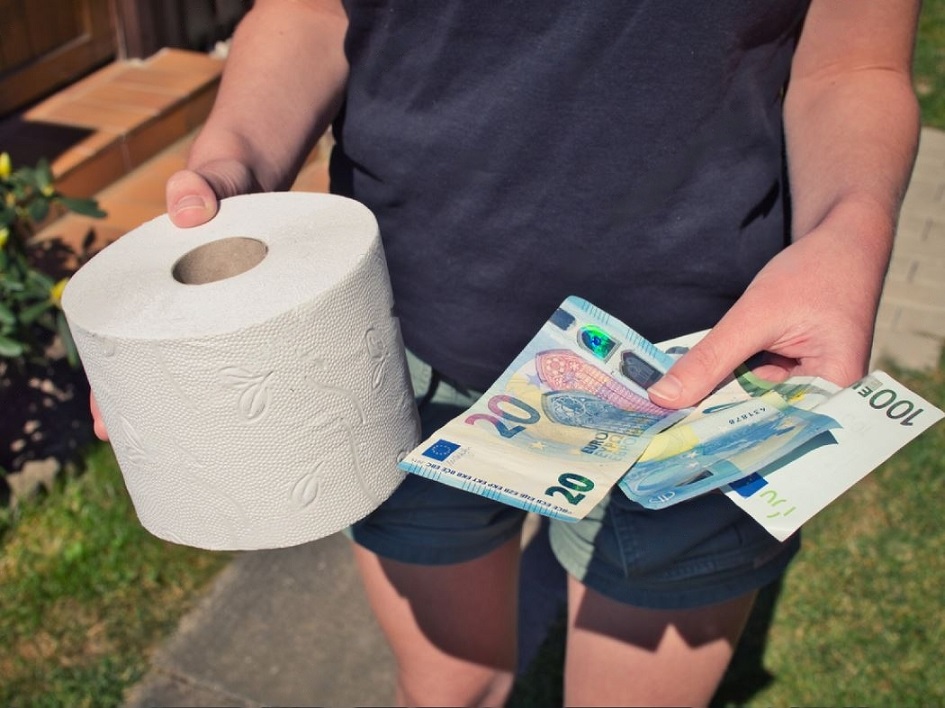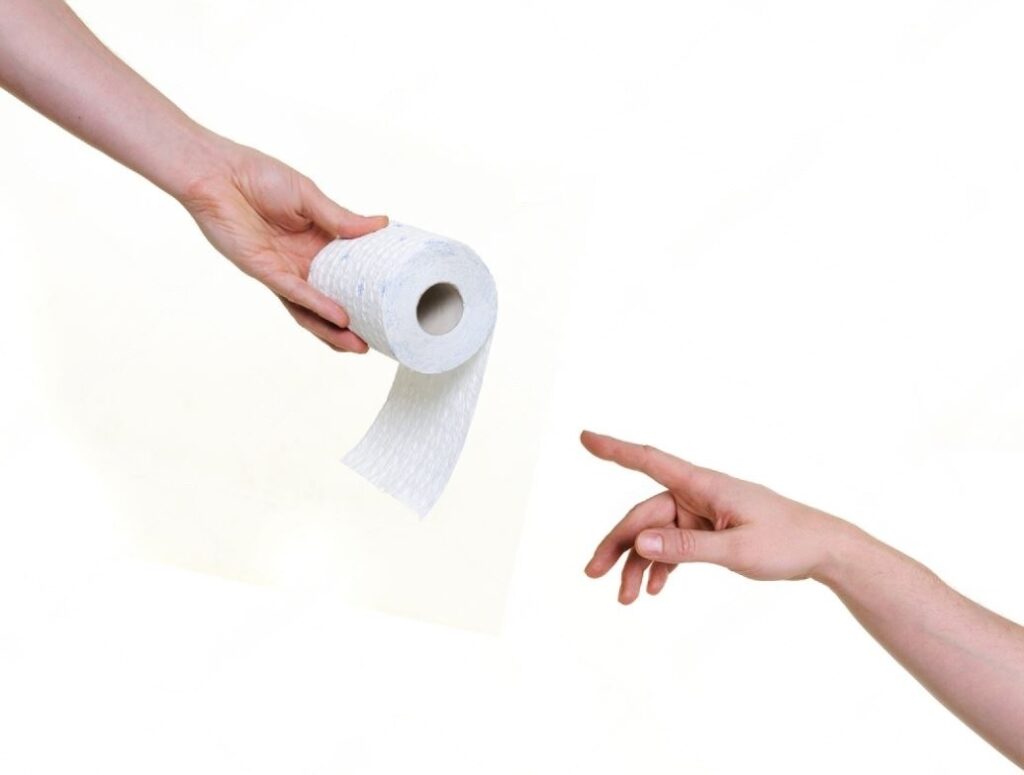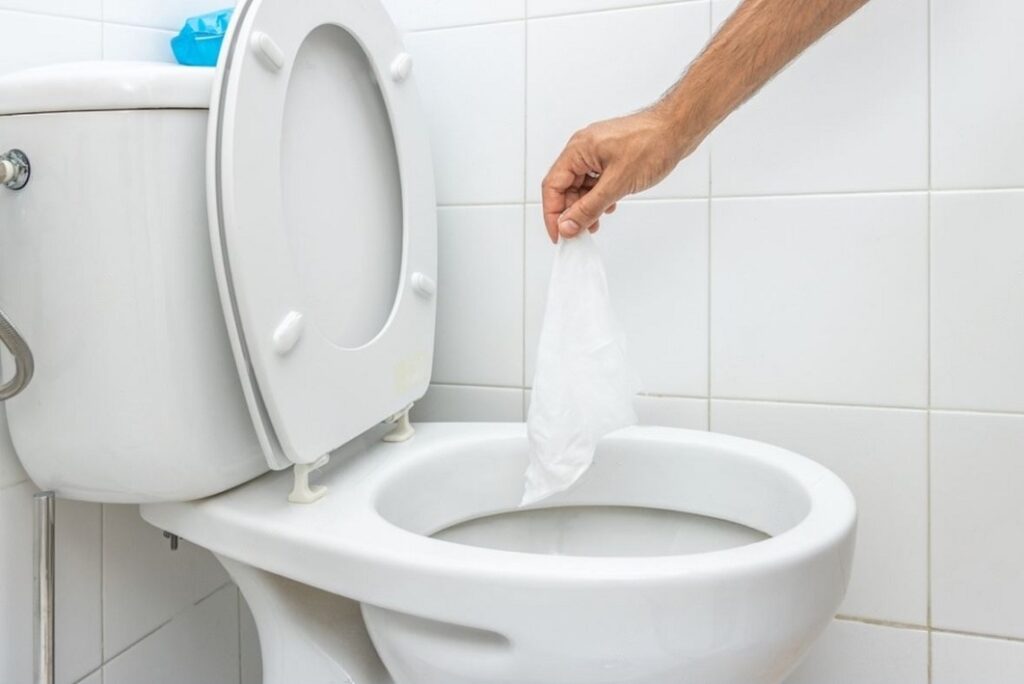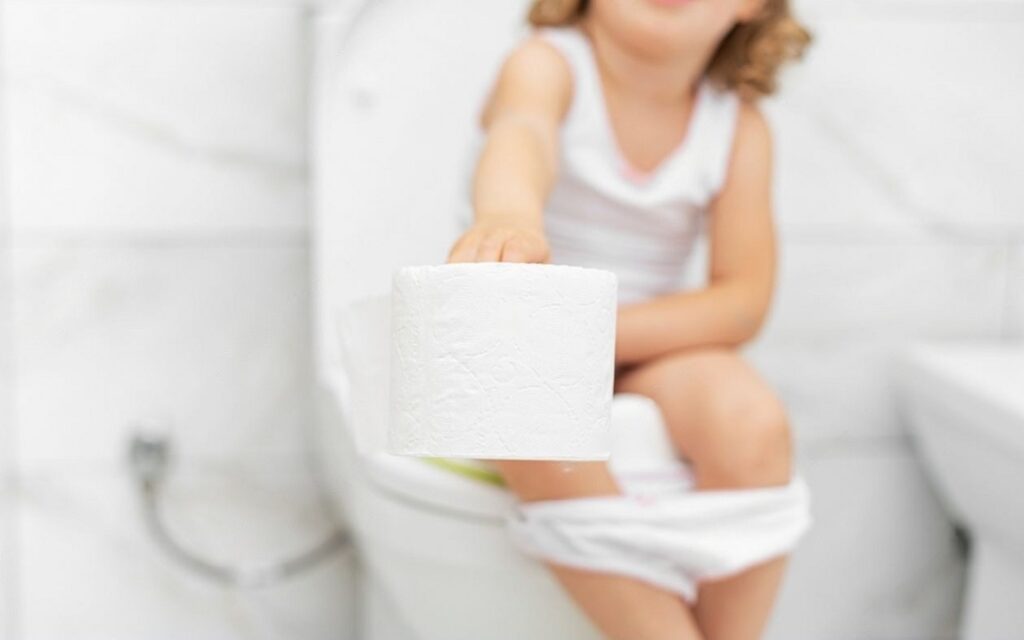Table of Contents
Introduction
The environmental impact of toilet paper waste is becoming more widely recognized as people become increasingly aware of sustainability issues.
A bidet is a bathroom fixture designed for cleaning your private parts after using the toilet. It’s like a mini shower for your bottom! Bidets come in different shapes and sizes, but they all have the same purpose: to help you stay clean and fresh.
How Do Bidets Work?
When you use a bidet, you don’t need toilet paper. Instead, you sit on the bidet (or sometimes beside it, depending on the type), and a gentle stream of water sprays upward to wash your bottom. You can adjust the temperature and pressure of the water to your liking, so it’s comfortable for you.
Growing awareness of environmental issues related to toilet paper waste
The environmental impact of toilet paper waste is becoming more widely recognized as people become increasingly aware of sustainability issues. Here’s why:
Deforestation Concerns: As more trees are cut down to produce toilet paper, forests are being depleted at an alarming rate. This loss of trees not only reduces the Earth’s ability to absorb carbon dioxide, a major greenhouse gas, but also threatens the habitats of countless plant and animal species.
Water Consumption: The production of toilet paper requires significant amounts of water, from the pulping process to the final product. This water usage contributes to water scarcity in regions where water resources are already limited, exacerbating environmental and social concerns.
Chemical Usage: The manufacturing process of toilet paper involves the use of chemicals such as chlorine and bleach to whiten and soften the paper. These chemicals can be harmful to aquatic ecosystems when they are released into waterways, leading to pollution and ecological damage.
- Energy Intensity: Toilet paper production is energy-intensive, requiring large amounts of electricity and fossil fuels. This reliance on non-renewable energy sources contributes to greenhouse gas emissions and exacerbates climate change, further impacting the environment.
- Waste Management Challenges: Once used, toilet paper contributes to the growing problem of waste management. Landfills are quickly filling up with discarded toilet paper, which takes years to decompose fully. Additionally, improper disposal of toilet paper can lead to littering and pollution of natural environments.
- Public Awareness and Advocacy: With the rise of environmental activism and awareness, more people are recognizing the need to reduce their ecological footprint, including their toilet paper consumption. Campaigns promoting alternatives such as bidets, recycled toilet paper, and reducing overall usage have gained traction as individuals seek to make more sustainable choices in their daily lives.
Overall, the growing awareness of environmental issues related to toilet paper waste is prompting individuals, businesses, and policymakers to explore alternative solutions and adopt more sustainable practices to minimize their impact on the planet. By making informed choices and advocating for change, we can work towards a future where toilet paper waste is no longer a significant environmental concern.

Understanding Bidets
Definition and history
The history of bidets dates back several centuries, with origins in France in the late 17th century. The word “bidet” itself comes from the French word for “pony,” as early versions of the fixture resembled a small horse or pony in shape. Originally used by French nobility for personal hygiene, bidets gradually gained popularity across Europe and other parts of the world.
Over time, bidet designs evolved to incorporate various features and functionalities. In the 19th century, porcelain bidets with built-in faucets and drains became more common, offering a more convenient and hygienic alternative to earlier models. By the 20th century, bidets had become a standard fixture in many European bathrooms, particularly in countries like Italy, Spain, and Portugal.
In recent decades, bidet technology has continued to advance, with the introduction of electronic bidet seats and integrated bidet toilets. These modern bidet systems offer additional features such as adjustable water temperature, pressure, and spray patterns, as well as air drying and heated seats for added comfort.
Today, bidets are used around the world, with varying levels of popularity and cultural acceptance in different regions. While bidet adoption remains higher in some countries than others, there is growing interest in bidets as people seek more sustainable and hygienic alternatives to traditional toilet paper. As awareness of environmental issues and personal hygiene increases, bidets are becoming an increasingly popular fixture in bathrooms worldwide.
Types of bidets (e.g., standalone, attachment)
There are a few different kinds of bidets:
- Standalone Bidets: These are like a separate sink for washing your bottom. You straddle the bidet and use the controls to adjust the water.
- Bidet Attachments: These are small devices that you can install on your existing toilet. They have a nozzle that sprays water, and you control it with buttons or a knob.
- Bidet Toilet Seats: These replace your regular toilet seat and have built-in bidet features. They’re like a fancy upgrade for your toilet!
No matter which type you choose, bidets are all about helping you feel clean and refreshed after using the bathroom. They’re a great way to reduce the amount of toilet paper you use and promote good hygiene.
How bidets work
Understanding how bidets work is essential for anyone considering using one. Here’s a simple explanation:
- Water Supply: Bidets are connected to the same water supply as your toilet. When you activate the bidet, a valve opens, allowing water to flow through the bidet’s nozzle or sprayer.
- Positioning: Depending on the type of bidet, you either sit on it or use it while remaining seated on the toilet. Standalone bidets require you to straddle them, while bidet attachments are used while sitting on the toilet.
- Activation: To start the cleaning process, you activate the bidet using a lever, button, or knob located within easy reach. This triggers the flow of water from the bidet’s nozzle or sprayer.
- Water Spray: Once activated, the bidet releases a gentle stream of water aimed at the genital and anal areas. You can adjust the temperature and pressure of the water to your preference for a comfortable and effective cleaning experience.
- Cleansing: The water stream effectively cleanses the targeted areas, removing residue and promoting hygiene. Some bidets may have different spray patterns or oscillating features for more thorough cleaning.
- Drying (Optional): After cleansing, some bidet models offer a drying function, which uses warm air to dry the area. Alternatively, you can use toilet paper or a towel to pat dry if desired.
- Deactivation: Once you’re finished using the bidet, you deactivate it by turning off the water flow using the same lever, button, or knob used for activation.
- Hygiene and Comfort: Bidets provide a hygienic and comfortable alternative to using toilet paper alone. The gentle water stream effectively cleanses without causing irritation, making it suitable for individuals with sensitive skin or certain medical conditions.
- Maintenance: Regular cleaning and maintenance are necessary to keep the bidet hygienic and functioning correctly. This typically involves wiping down the surface of the bidet and periodically cleaning the nozzle or sprayer to prevent buildup of bacteria or mineral deposits.
Overall, bidets offer a convenient and environmentally friendly solution for personal hygiene. By using water instead of toilet paper, bidets help reduce waste and promote better cleanliness and comfort for users.

Toilet Paper Waste Problem
Statistics on toilet paper consumption
While exact statistics on toilet paper consumption can vary by region and over time, here are some general figures to provide insight into the scale of toilet paper usage:
- Global Toilet Paper Consumption:
According to data from Euromonitor International, global toilet paper consumption amounted to approximately 39 million metric tons in 2020.
- Per Capita Consumption:
In developed countries such as the United States and Canada, per capita toilet paper consumption is among the highest in the world. On average, an individual in the United States uses about 141 rolls of toilet paper per year.
- Regional Variations:
Toilet paper consumption varies significantly by region and cultural practices. For example, countries in Western Europe and North America tend to have higher levels of toilet paper usage compared to regions such as Asia and Africa.
- Trends in Consumption:
With increasing awareness of environmental issues and sustainability concerns, there has been a growing interest in reducing toilet paper consumption and exploring alternative hygiene solutions such as bidets.
- Impact of COVID-19 Pandemic:
The COVID-19 pandemic led to a surge in demand for toilet paper in many parts of the world, driven by panic-buying and stockpiling behavior. While consumption patterns may have temporarily shifted during this period, the long-term impact on toilet paper usage remains to be seen.
- Environmental Concerns:
The high demand for toilet paper has significant environmental implications, including deforestation, water usage, and waste generation. As a result, there is increasing focus on promoting more sustainable practices and reducing reliance on disposable paper products.
While these statistics provide a snapshot of toilet paper consumption on a global scale, it’s essential to recognize that consumption patterns can vary widely depending on factors such as lifestyle, cultural norms, and availability of alternative hygiene solutions. As awareness of environmental issues continues to grow, there is potential for shifts in consumer behavior and the adoption of more sustainable practices in the future.
Environmental impact of toilet paper production and disposal
The production and disposal of toilet paper have significant environmental impacts across various stages of the product’s lifecycle. Here’s a breakdown of these impacts:
- Deforestation:
Toilet paper production relies heavily on wood pulp derived from trees, particularly softwood trees like spruce, pine, and fir. This demand for wood pulp contributes to deforestation, as forests are cleared to make way for timber plantations. Deforestation not only reduces biodiversity and disrupts ecosystems but also diminishes the forests’ ability to absorb carbon dioxide, a greenhouse gas that contributes to climate change.
- Water Usage:
The manufacturing process of toilet paper requires substantial amounts of water for pulping, processing, and bleaching the wood pulp. This water usage can put strain on local water sources and ecosystems, particularly in regions where water scarcity is a concern. Additionally, the discharge of wastewater from paper mills can pollute waterways with harmful chemicals and organic pollutants, further degrading water quality and aquatic habitats.
- Energy Consumption:
Toilet paper production is energy-intensive, relying on electricity and fossil fuels for various stages of the manufacturing process, including pulping, drying, and packaging. The combustion of fossil fuels releases greenhouse gases such as carbon dioxide and methane, contributing to climate change and air pollution. Energy-intensive processes also have implications for resource depletion and environmental degradation associated with the extraction and transportation of fossil fuels.
- Chemical Pollution:
The bleaching process used to whiten and brighten toilet paper often involves the use of chlorine and other chemicals, which can have harmful environmental consequences. Chlorine-based bleaching can produce toxic byproducts such as dioxins and chlorinated organic compounds, which are persistent in the environment and can bioaccumulate in ecosystems. These chemicals pose risks to human health and wildlife, as they can contaminate air, soil, water, and food sources.
- Waste Generation:
Once used, toilet paper contributes to the growing problem of waste generation and disposal. In households, toilet paper is typically flushed down toilets and enters wastewater treatment systems. However, in areas without adequate sanitation infrastructure, toilet paper may be disposed of improperly, leading to littering, pollution, and environmental degradation. Additionally, in regions where toilet paper is not readily biodegradable, it can accumulate in landfills, where it may take years or even decades to decompose fully.
Overall, the production and disposal of toilet paper have far-reaching environmental impacts, from deforestation and water pollution to energy consumption and waste generation. As concerns about sustainability and environmental stewardship continue to grow, there is a need to explore alternative materials and practices that minimize the environmental footprint of hygiene products like toilet paper.

Challenges of toilet paper waste management
Managing toilet paper waste presents several challenges, spanning from collection and disposal to environmental and public health concerns. Here are some of the key challenges:
- Collection and Sorting:
Toilet paper waste is often mixed with other household waste, making it challenging to separate and recycle effectively. Municipal waste management systems may face difficulties in collecting and sorting toilet paper waste from general refuse, leading to inefficiencies in recycling efforts.
- Contamination and Hygiene Risks:
Used toilet paper can contain bodily fluids and pathogens, posing contamination and hygiene risks during collection, handling, and processing. Waste management workers may be exposed to infectious agents, leading to potential health hazards if proper safety measures are not implemented.
- Lack of Recycling Infrastructure:
While toilet paper is theoretically recyclable due to its paper-based composition, the infrastructure and technology for recycling toilet paper waste may be limited or underdeveloped in many regions. As a result, much of the toilet paper waste ends up in landfills rather than being recycled into new products.
- Environmental Impacts of Landfilling:
When toilet paper waste is disposed of in landfills, it contributes to methane emissions, a potent greenhouse gas that contributes to climate change. Additionally, the decomposition of organic matter in landfills generates leachate, a toxic liquid that can contaminate soil and groundwater if not properly managed.
- Non-biodegradable Additives:
Some toilet paper products contain additives such as synthetic fibers, fragrances, and dyes, which can impede biodegradation and complicate waste management efforts. These additives may persist in the environment and pose risks to ecosystems and human health if released during decomposition.
- Cultural and Behavioral Factors:
Cultural norms and consumer behavior play a significant role in toilet paper waste management practices. In regions where bidets or alternative hygiene practices are less common, reliance on toilet paper may be higher, leading to increased waste generation and disposal challenges.
- Education and Awareness:
Many people may not be aware of the environmental impacts of toilet paper waste or the importance of proper waste management practices. Education and awareness campaigns are needed to promote responsible consumption, recycling, and disposal of toilet paper to mitigate its environmental footprint.
Addressing the challenges of toilet paper waste management requires a multifaceted approach that includes improving recycling infrastructure, implementing proper hygiene and safety protocols, promoting alternative hygiene practices, and raising public awareness about the environmental consequences of excessive toilet paper consumption. By working together, communities, businesses, and policymakers can develop sustainable solutions to minimize the environmental impact of toilet paper waste.

Bidets as a Sustainable Solution
Reduction of toilet paper usage
Reducing toilet paper usage offers numerous environmental, economic, and health benefits, making it a sustainable solution worth considering. Here’s why:
Environmental Benefits:
Conservation of Resources: By using less toilet paper, we can help conserve valuable natural resources such as trees and water, which are essential for toilet paper production.
Reduction of Waste: Less toilet paper usage means less waste generated, reducing the burden on landfills and minimizing environmental pollution.
Mitigation of Deforestation: Decreasing demand for toilet paper can help mitigate deforestation, preserving biodiversity and mitigating climate change by maintaining carbon sinks in forests.
Economic Savings:
Cost Reduction: Using less toilet paper can lead to significant cost savings for households, businesses, and public facilities, as fewer resources are needed for production, transportation, and disposal.
Maintenance Savings: Reduced toilet paper usage can also lead to savings in maintenance costs associated with plumbing repairs and clogs caused by excessive toilet paper usage.
Health and Hygiene Benefits:
Promotion of Personal Hygiene: While toilet paper is effective for basic hygiene, reducing reliance on it encourages the adoption of more thorough and hygienic cleaning methods, such as bidets or wet wipes, which can help prevent infections and promote overall cleanliness.
Reduction of Irritation: Excessive use of toilet paper can cause irritation and discomfort, especially for individuals with sensitive skin or certain medical conditions. Using less toilet paper or alternative cleaning methods can help alleviate these issues.
Promotes Sustainable Practices:
Cultural Shift: Encouraging people to use less toilet paper fosters a cultural shift towards more sustainable and mindful consumption habits, raising awareness about the environmental impact of everyday choices.
Encourages Innovation: The drive to reduce toilet paper usage stimulates innovation in alternative hygiene products and practices, such as bidets, compostable wipes, and reusable cloth options, offering more sustainable alternatives to traditional toilet paper.
Global Impact:
Collective Action: While individual efforts to reduce toilet paper usage may seem small, collectively, they can have a significant impact on reducing the environmental footprint of toilet paper production and waste generation worldwide.
Inspires Others: By leading by example and demonstrating the benefits of reducing toilet paper usage, individuals and communities can inspire others to adopt more sustainable behaviors, contributing to broader efforts for environmental conservation.
Reducing toilet paper usage is a simple yet effective way to promote sustainability and minimize our environmental impact. By adopting mindful consumption habits, exploring alternative hygiene practices, and raising awareness about the importance of reducing toilet paper waste, we can contribute to a healthier planet and a more sustainable future for generations to come.
Environmental benefits of using bidets
Using bidets offers several environmental benefits compared to traditional toilet paper usage. Here’s how:
Reduction in Toilet Paper Consumption:
Bidets significantly reduce the amount of toilet paper needed for personal hygiene. By using water for cleansing, bidet users can minimize their reliance on disposable paper products, leading to a substantial decrease in toilet paper consumption.
Conservation of Trees and Forests:
With less toilet paper being used, there is a reduced demand for wood pulp derived from trees. This helps conserve forests and mitigates deforestation, preserving biodiversity and maintaining vital ecosystems that contribute to carbon sequestration and climate regulation.
Water Conservation:
While bidets use water for cleansing, they typically consume much less water than the production process required for toilet paper. By opting for bidets, individuals can help conserve water resources and reduce the environmental footprint associated with water-intensive industries like pulp and paper manufacturing.
Reduction of Pollution:
The production of toilet paper involves various chemicals and pollutants, including chlorine-based bleaches and wastewater discharge. By reducing toilet paper usage, bidet users can help minimize the release of harmful chemicals into the environment, thereby reducing water pollution and protecting aquatic ecosystems.
Decreased Waste Generation:
By using bidets, individuals can reduce the amount of toilet paper waste generated. This helps alleviate the burden on landfills and reduces the environmental impacts associated with waste disposal, such as methane emissions and soil contamination.
Lower Carbon Footprint:
Bidets offer a more environmentally friendly alternative to toilet paper, as they require fewer resources and produce fewer greenhouse gas emissions throughout their lifecycle. By choosing bidets over traditional toilet paper, individuals can help lower their carbon footprint and contribute to efforts to combat climate change.
Encourages Sustainable Behavior:
Incorporating bidets into daily hygiene routines promotes sustainable behavior and encourages individuals to consider the environmental impact of their choices. By embracing eco-friendly alternatives like bidets, people can take proactive steps towards reducing their environmental footprint and fostering a culture of sustainability.
In summary, using bidets instead of relying solely on toilet paper offers multiple environmental benefits, including reduced paper consumption, conservation of trees and water resources, decreased pollution, and lower waste generation. By making the switch to bidets, individuals can contribute to a more sustainable future while enjoying the added benefits of improved hygiene and comfort.

Comparative analysis of bidet vs. toilet paper usage
Aspect | Bidet Usage | Toilet Paper Usage |
Hygiene | Provides thorough cleaning with water | Relies on wiping with toilet paper |
Environmental Impact | Reduces paper consumption and waste | Relies on paper production and disposal |
Water Usage | Uses water for cleansing | Requires water for production |
Resource Consumption | Minimal reliance on paper resources | Relies heavily on paper production |
Comfort | Offers adjustable water pressure and temperature for personalized comfort | Dependent on quality and softness of toilet paper |
Cost Over Time | Initial investment in bidet installation, potential long-term savings on toilet paper costs | Ongoing expense for purchasing toilet paper |
Health Benefits | May help prevent irritation and promote better hygiene | Risk of irritation or discomfort with excessive wiping |
Accessibility | Some models may offer additional features for individuals with mobility or hygiene needs | Universal accessibility but may require assistance for certain individuals |
Cultural Acceptance | Varies by region and cultural norms | Widely accepted and ingrained in many cultures |
This comparative analysis highlights the differences between bidet and toilet paper usage across various aspects, including hygiene, environmental impact, resource consumption, comfort, cost, health benefits, accessibility, and cultural acceptance. Ultimately, the choice between bidet and toilet paper usage depends on individual preferences, cultural norms, and considerations such as sustainability, hygiene, and comfort.
Cultural and Global Perspectives
Bidet adoption varies widely around the world, with some regions embracing them as a standard fixture in bathrooms and others viewing them with skepticism or cultural taboo. In countries like Japan and parts of Europe, bidets are commonly found in homes and public restrooms, reflecting a cultural preference for cleanliness and hygiene. However, in other regions, bidets are less common, and there may be resistance to adopting them due to cultural norms or lack of awareness.
Health and Hygiene Considerations
One of the primary benefits of bidets is their ability to promote better personal hygiene. Unlike toilet paper, which can leave behind residue and bacteria, bidets provide a thorough and hygienic cleaning experience. This can help prevent issues such as urinary tract infections and hemorrhoids, which are often exacerbated by poor hygiene practices. Contrary to common misconceptions, bidets are safe and sanitary to use, with many models featuring adjustable water pressure and temperature settings for personalized comfort.
Economic Implications
While the initial cost of purchasing and installing a bidet may seem daunting to some, it’s essential to consider the long-term economic benefits. Over time, bidet users can save a significant amount of money on toilet paper expenses. Additionally, businesses and public facilities can benefit from reduced maintenance costs associated with clogged pipes and overflowing trash bins. As bidet technology continues to advance, we can expect to see more affordable options that make bidets accessible to a wider range of consumers.
Technological Advancements and Innovations
In recent years, there have been exciting developments in bidet technology, making them more user-friendly and efficient than ever before. Smart bidets, equipped with features like heated seats, customizable cleansing modes, and air drying functions, are becoming increasingly popular. These advancements not only enhance the user experience but also contribute to water conservation efforts by optimizing usage and minimizing waste. As technology continues to evolve, we can expect to see even more innovations in bidet design and functionality.
Overcoming Barriers to Bidet Adoption
Despite the numerous benefits of bidets, there are still barriers to widespread adoption. Cultural resistance and stigma surrounding bidets can make it challenging to promote their use in certain regions. Additionally, infrastructure and installation challenges may deter some individuals from investing in bidet systems for their homes or businesses. Education and awareness campaigns are essential for dispelling myths and misconceptions about bidets and highlighting their potential benefits for both personal hygiene and environmental sustainability.
Conclusion
Bidets offer a simple yet effective solution to the growing problem of toilet paper waste. By reducing reliance on traditional paper products and promoting better personal hygiene practices, bidets can help minimize environmental impact and contribute to a more sustainable future. As awareness grows and technology continues to improve, we can expect to see increased adoption of bidets in households, businesses, and public facilities worldwide. It’s time to rethink our bathroom habits and embrace a cleaner, greener way of living.
